Nissan Altima Vs Maxima: Which Sedan is Right For You?

The Nissan Altima and Nissan Maxima have similar looks, are similar in size, and aren’t that far apart in price, either.
For that reason, it might be a bit difficult to decide between these two family sedans. In this post, we’ll compare the appearance, powertrains, size, pricing, and other important aspects of these two cars, hopefully leaving you with a better of idea of which is better suited to your lifestyle and your needs.
Get a Quote on a New Nissan Altima or MaximaScroll below to learn everything you need to know about the Nissan Altima and Maxima.
Nissan Altima vs Maxima
Design
Nissan Altima: The Nissan Altima has a sporty and geometric design with a large front grille, a dramatic side styling line with a prominent notch at the c-pillar that creates a “floating roof” illusion, an integrated rear diffuser, dual tailpipes, and other youthful elements. The Altima was updated for 2019, so this design is still fairly recent.
Nissan Maxima: The Maxima is quite similar to the Altima in appearance with a similarly geometric design. The Maxima’s slightly larger size is quite obvious upon first glance, though, thanks to its more elongated stance. The Maxima also has a similar notch in the c-pillar for that “floating roof” look, and appears almost identical to the Altima from the rear. The Maxima’s styling is a bit more dramatic than the Altima with its floating roof design and funkier boomerang headlights. The sweeping line flowing from those peepers down and back under the door handles suggests—accurately—that there’s more volume within the Maxima.
SEE ALSO: 2019 Nissan Altima Platinum Review – VIDEOBottom Line: While not identical, these two sedans were very clearly designed by the same company — both sedans have different iterations of the company’s trademark V-Motion Grille. If you like the design of one, you will probably like the other. Some shoppers may prefer the more up-to-date looks of the Altima, however, while others may prefer the funkier style of the Maxima.
Space/Practicality
Altima: The Altima is four-door mid-size sedan with seating for five. Front seat passengers enjoy legroom of 43.8 inches and headroom of 39.2 inches, while rear seat passengers have 35.2 inches of legroom and 36.9 inches of headroom. Opting for the moonroof drops headroom to 38.0 and 36.7 inches, front and back. It has a total interior volume of 100.8 cu-ft and a maximum cargo capacity of 15.4 cu-ft.
Maxima: The Maxima is a four-door mid-size sedan with seating for five. It has front seat passenger legroom of 45.0 inches and front headroom of 39.4 inches. A moonroof slices a half inch off the latter measure. Rear seat legroom sits at 34.2 inches while rear headroom is 36.7 inches, or 0.9 inches less with the moonroof. It has a maximum interior passenger volume of 98.5 inches and a maximum cargo capacity of 14.3 cu-ft.
Bottom Line: Nissan’s lineup is odd in that it offers two mid-size sedans. The Altima has superior packaging to the Maxima and is actually the most spacious of all Nissan sedans. For that reason, the Altima is the better choice between these two if you have a family or often carry rear seat passengers or cargo. Both have ridiculously comfortable Zero Gravity seats.
Powertrains/Fuel Economy
Altima: The Altima is offered with two engines. The base powertrain is a 2.5-liter four-cylinder engine, which is rated at 188 hp and 180 lb-ft of torque, and it connects to a CVT transmission. Power is sent to the front wheels, although Nissan’s Intelligent All-Wheel Drive system is available at additional cost with the 2.5-liter engine.
This setup returns an EPA certified 28 mpg city and 39 mpg highway for a combined rating of 32 mpg. Those numbers are for the base S trim, however: the rest of the front-drive models score 27/37/31 mpg, respectively. All-wheel drive 2.5-liter models see a slight dip in fuel economy to 26 mpg city and 35–36 mpg highway for a combined rating of 29–30 mpg combined.
The optional high-tech 2.0-liter variable compression turbocharged engine in the Altima is rated at 248 hp and 273 lb-ft of torque on premium fuel (236 hp / 267 lb-ft regular) and is also paired with a CVT transmission and FWD (AWD is only offered with the 2.5-liter engine). The 2.0-liter engine is rated at 25 mpg city and 34 mpg highway for a combined rating of 29 mpg.
Maxima: the Maxima only offers a single powertrain: a 3.5-liter V6 rated at 300 hp and 261 lb-ft of torque. Only offered with front-wheel drive, the EPA rates the sedan at 20 mpg city and 30 mpg highway for a combined rating of 24 mpg.
SEE ALSO: Where is Nissan From and Where are Nissans Made?Bottom Line: The Altima has two powertrains on offer, compared to the Maxima’s sole V6, and is also offered with all-wheel drive. This makes the Altima the clear winner in the powertrain category. If you want a V6 engine, though, then you’ll be forced into the Maxima, but the VC Turbo in the Altima is quite good.
Driving Dynamics
Altima: When we drove the then-new 2019 Nissan Altima, we said that it “feels light on its feet and agile, with a nice amount of heft to the steering system.” We also said the CVT was “agreeable,” and appreciated the powerful optional 2.0-liter engine, which pulls “with absolute authority from about 3,500 on the tachometer upward beyond five-grand,” and “makes the new Altima properly fast.” We didn’t like that the 2.0-liter engine wasn’t offered with AWD, though.
Maxima: When we last tested the Nissan Maxima, we said the big sedan had “a surprising amount of pep to its step,” thanks to the 3.5-liter V6 and said the steering was “pleasantly heavy” and that the car “responds to directional changes well.” Despite it being a bit stiff, it also felt “precise and confident, with limited body roll.”
Bottom Line: The Altima provides a cushier ride and with a newer and more refined 2.0-liter engine, it is likely the one that most people will find more fun to drive. The Maxima is tuned for sportiness, though, which helps the front end feel sharper on twisty roads — at the expensive of some rough road comfort.
Technology
Altima: The Altima comes standard with an 8.0-inch touchscreen infotainment display with Apple CarPlay and Android Auto. There is also standard Bluetooth, a standard six-speaker audio system, available active noise cancellation and two USB ports. Standard active safety tech includes cruise control, forward collision assist with emergency braking, hill start assist and a driver alertness monitor. Available tech includes the venerable Nissan ProPilot assist semi-autonomous driving suite, lane intervention and emergency brake with pedestrian detection, among more.
Maxima: The Maxima also comes with a standard 8.0-inch touchscreen infotainment display with Apple CarPlay and Android Auto. It gets a superior eight-speaker audio system as standard, however, along with a multi-function steering wheel and one USB port. Automatic emergency braking is standard, but many other active safety technologies are optional. The ProPilot assist semi-autonomous driving suite is also available.
SEE ALSO: 5 Car Brands With the Most Loyal Customers According To J.D. PowerBottom Line: both of these vehicles offer similar technologies standard. The most important thing is that they are offered with active safety tech — especially ProPilot assist, which adds a range of helpful safety technologies that can keep you and your family safe on the road. This category is a toss-up, as the Maxima and Altima are quite equally matched here.
Pricing
Altima: The Altima starts at $25,225 in the United States for the S base model (including destination), while the mid-tier SR, which features the basic equipment that most consumers will want, starts at $27,125. The most expensive model, the Platinum AWD, starts at $35,025.
Maxima: The Maxima is positioned as a more premium product than the Altima, so there is quite a big price difference. The Maxima starts at a pricey $37,915 for the base SV model, but it offers much more equipment in base guise than the pedestrian Altima. The most expensive model, the 40th Anniversary, starts at $45,270.
SEE ALSO: Top 10 Most Dependable Automakers of 2020 According to J.D. PowerBottom Line: the Altima is priced between $25,000 to $35,000 depending on the trim level you choose, while the Maxim is starts above that, and can reach $45,000. That is quite a large price difference and, to be honest, it doesn’t seem as though the Maxima is worth the roughly $10,000 price premium. The Altima is better value in just about every way, if you ask us.
The Verdict: Nissan Altima vs Maxima
Normally, these comparisons are fairly close and we advise shoppers to try both vehicles and see which suits their needs. This time, though, we have to say that the Altima is the clear winner. With more up-to-date looks, technology, and powertrains, more space for passengers and cargo, available all-wheel drive and much more reasonable pricing, we would steer just about everyone away from the Maxima and toward the Altima.
Become an AutoGuide insider. Get the latest from the automotive world first by subscribing to our newsletter here.

Sam McEachern holds a diploma in journalism from St. Clair College in Windsor, Ontario, and has been covering the automotive industry for over 5 years. He conducts reviews and writes AutoGuide's news content. He's a die-hard motorsports fan with a passion for performance cars of all sorts.
More by Sam McEachern



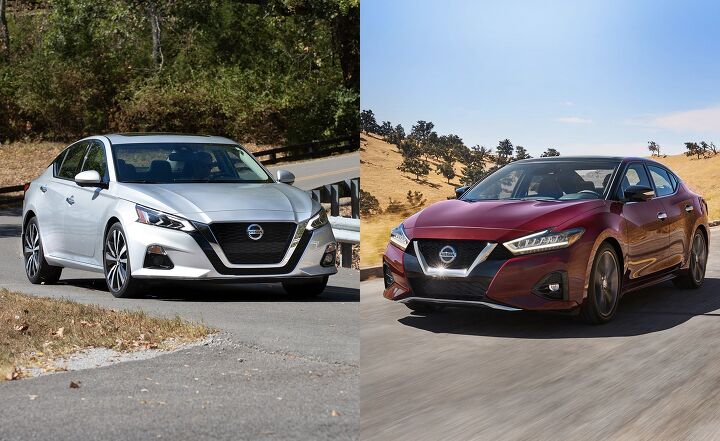






















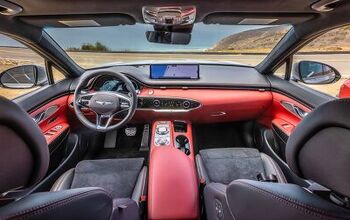
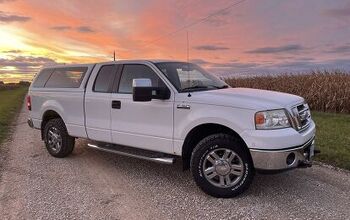
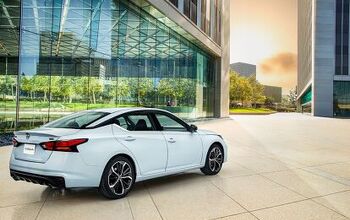
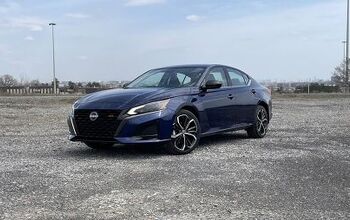
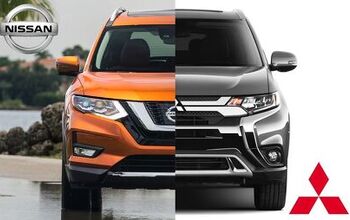
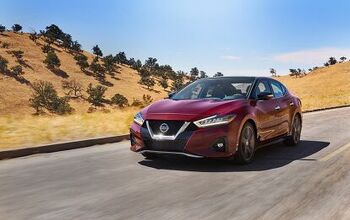
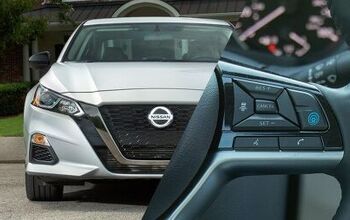










Comments
Join the conversation